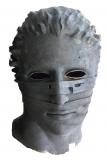Results 1 to 7 of 7
-
02-26-2015, 05:36 PM #1Student

- Join Date
- Feb 2015
- Posts
- 2
Engineering use with budget 3d printer
Hi,
Firstly, Im totally new to the 3d printing world and have never even seen one in the flesh let alone used one......
I work for an engineering / machining company who produce limited quantity one offs & prototypes to several Oil service companies large and small.
On a couple of occasions we have experienced issues with quality of threads that have to be cut manually due to the limited number of units ( CNC not cost effective )
usually bespoke sized stubb ACME threads for which hard gauges are not readily available ( and if they were the cost would again be prohibitive )
I have been asked to look into the possibility of buying a 3d printer that is capable of printing out relatively simple plastic cylinders or tubes with either external or internal threads "cut" into them that could be used to check thread quality before shipping the parts
Concerns would be the final printed tolerance of thread profile shape & "roundness" of the final part
Is this totally ridiculous or is it feasible ?
I have a budget of around $5k to spend on hardware & consumables to start with and print area would probably have to be at least 8x8x8" but bigger the better..
So far I have narrowed it down ( based purely on searching the internet ) to Luzbot Taz 4 , Ultimaker 2 Extnd or Makerbot 5th gen ( last one is potentially a little small )
I realize the TAZ is opensource and the software is iffy, the Ultimaker looks like it has better quality outputs but limited material selections and some clogging issues & the makerbot appears to be the "industry standard" but potentially slow output
Id really appreciate some feedback from someone with actual hands on experience
Thanks,
SS
-
02-26-2015, 07:46 PM #2
Can you please give me an STL of what you want to do and I will try to print it this weekend
-
02-26-2015, 08:14 PM #3Engineer

- Join Date
- Aug 2014
- Location
- Montreal, Quebec
- Posts
- 576
I have done several test printing 7-8inch diameter cilynder parts. Pretty much I dare say, my boss requires me to calibrate the machine as much as possible.
Typical roundness error was 0.025", that is due to srhrinking when it comes to FDM printers.
And Ultimaker is nowhere limited in material selection..... where did you get that info from? You can print pretty much anything available, abs, pla, ninjaflex, carbon fiber, nylon etc with ultimaker 2 or 1.
-
02-26-2015, 10:18 PM #4
If you're trying to print threads, i don't think any of those choices are appropriate. For that kind of precision, i think you should be looking at SLA/DLP resin type printers. It strikes me that taskman of gizmo3dprinters (see above) seems to know that line of printing pretty well. Give it a look.
-
02-27-2015, 03:16 AM #5
My advice : spend 100$ ordering various test parts on 3DHubs or elsewhere and you'll see what the machines can do much more clearly than with whatever words we can write here.
-
02-27-2015, 07:33 AM #6Engineer-in-Training

- Join Date
- Oct 2014
- Posts
- 314
You need to define the level of precision needed for the gauges you want to print. My guess, not having that information, is that if the purchase price of hard gauges is too high to justify, it's because you're talking about high precision gauges (which makes sense because low precision gauges aren't terribly useful anyway) on the order of ±0.001" or less. While it is certainly possible to produce something that precise with a consumer level 3d printer it's going to take a lot of trial and error per gauge to pull it off. Positioning accuracy of the print head is there but the material accuracy is not.
An SLA (laser or dlp) machine as suggested above will probably work better than an FDM for this application but ultimately you'd be better served purchasing a 3d printed part from shapeways or someone similar who will produce it on an industrial grade machine with much tighter tolerances. Pricing for those services is generally quite cheap unless you're talking very large parts but careful design work can help a lot there. Typically cost is a function of total material used so creative hollowing or other features that reduce the total material usage will greatly reduce pricing.
-
02-27-2015, 08:12 AM #7Student

- Join Date
- Feb 2015
- Posts
- 2
Thank you everyone for your rapid and informative responses ! I really appreciate it !
Totally sensible suggestion to try existing vendors and have them print out a model on commercial machines to check the feasibility and required accuracy and that's what I'm gonna do to start with.
Taskman, I will put together a small example stl file of what I'm talking about and send to you next week, ( up to my ears in more mundane projects at the moment ) thanks a lot for offering to try this out for me to see if its even viable
I do have other potential applications for the technology including visualization tools for our more "oldschool" clients who haven't gotten down with these "new fangled" computers and prefer to touch and feel stuff to make design decisions so the extrusion type machines may be more suitable for that kind of application
Again thanks a lot for the rapid and helpful responses
SS




 Reply With Quote
Reply With Quote






Extruder not feeding during print,...
Today, 01:59 AM in Tips, Tricks and Tech Help